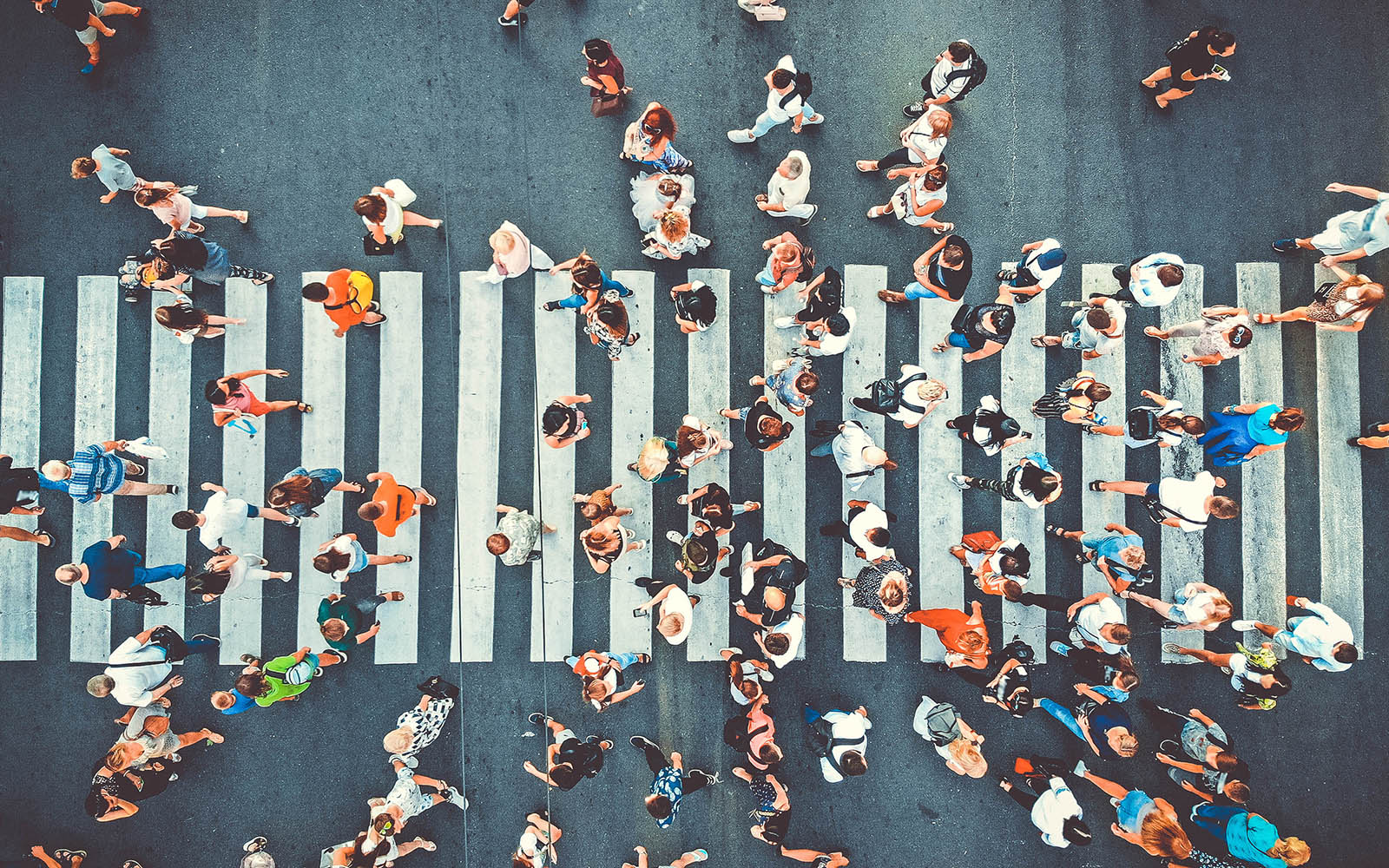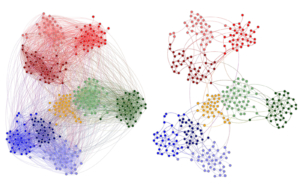A simpler way to track the spread of infectious diseases

When applied to social contact maps, the method recently developed by Gulbenkian scientists has proved useful to study how viruses spread in society and how we can stop them. Public health specialists are already taking advantage of these new findings, published in PLOS Computational Biology, to study the spreading of diseases such as monkeypox and COVID-19.
How society organizes affects different phenomena, from the transmission of information to the spread of contagious diseases. The more links we establish with each other via social and transportation networks, the more spread is favored. To study the dynamics of complex systems, such as society, we can infer these networks – in which nodes, representing individuals, connect through lines – from real-world data. However, these networks are usually large, dense, and cumbersome to manipulate.
In previous work, Luís M. Rocha’s group at the Instituto Gulbenkian de Ciência (IGC) found a way to simplify networks by extracting their backbones. The principle behind this method is quite simple: it finds the shortest path to reach every other point in a network and deletes redundant alternatives. But how do we find these shorter paths? Rion B. Correia, a postdoc at the IGC, explains: “In the three-dimensional world we live in, we are used to thinking in terms of shortest paths, for instance, how to go from home to work through the shortest/fastest possible route. But in multi-dimensional systems (adding traffic, multiple modes of transportation, and road constructions), the shortest path is not necessarily the direct path between two points”. Even if there are infinite ways to get from A to B, with this method researchers can focus on the most important paths. Since then, the researchers have applied it to study a variety of networks, from gene interactions to essential communication pathways in the brain.
Now, the team took this method to a whole new level by testing it on real human contacts. For this, they used previously recorded contacts between nearly 3000 individuals using wearable proximity sensors in a variety of social settings, including schools, a hospital and an art exhibit. Then, they transformed this contact data into social networks, where links represent the amount of time people spent together.

High school contact network of 327 students. Colors represent the four student specializations; lighter or darker colors separate distinct classes within each specialization. The original distance graph is represented on the left and the respective backbone on the right © Rion B. Correia, 2023
The researchers concluded that the backbones of social contact networks were very small. “This means that a lot of connections in human communities are redundant”, Rion, first author of this study, explains. Surprisingly, this backbone still preserved the community structure, stemming from people’s tendency to cluster in groups. And it did it much better than other methods.
Reduced to 6-20% of the original networks, the backbones make it much easier to understand how communities organize and study simple transmission dynamics. In this study, the researchers demonstrated that the backbone is a reliable tool to explain how processes such as viral infection spread in a population, as well as to identify the most relevant social contacts to stop contagion. But the implications of the backbone of social systems go much beyond epidemiology. “The recent pandemic demonstrated that our social lives and overall public health depends heavily on interactions that cross scales from the molecular network of minute pathogens to all our transportation, health, economy, ecology, and governance networks”, Luís highlights. “Our basic research on backbones adds another tool in the study of networks that link the tiniest virus to the most potent economy. It is only through the fundamental understanding of how these systems interact that we can solve these XXI century problems”, he concludes.
This study was developed by the Instituto Gulbenkian de Ciência (IGC) in collaboration with the State University of New York at Binghamton, Aix Marseille Univ, Université de Toulon, CNRS, CPT, Turing Center for Living Systems, France, and partially funded by National Institutes of Health, National Library of Medicine Program, Fundação para a Ciência e a Tecnologia, the Agence Nationale de la Recherche (ANR), a Fulbright Commission fellowship (LMR), and a CAPES Foundation fellowship.
Read paper
